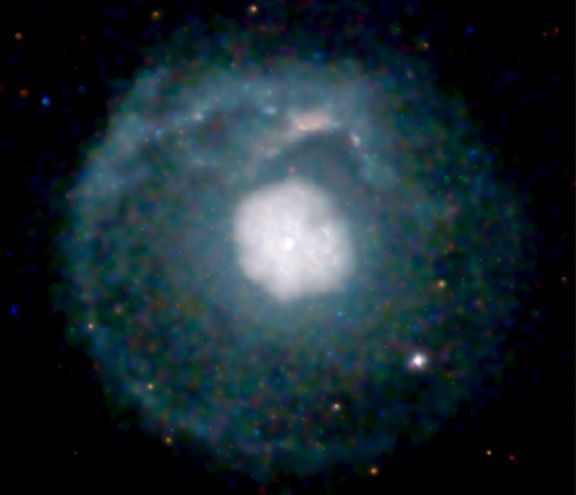Explanation: The picture is lovely, but this pretty cosmic shell was produced by almost unbelievable violence - created when a star with nearly 20 times the mass of the sun blasted away its outer layers in a spectacular supernova explosion. As the expanding debris cloud swept through surrounding interstellar material, shock waves heated the gas causing the supernova remnant to glow in x-rays. In fact, it is possible that all supernova explosions create similar shells, some brighter than others. Cataloged as G21.5-0.9, this shell supernova remnant is relatively faint, requiring about 150 hours of x-ray data from the orbiting Chandra Observatory to create this false-color image. G21.5-0.9 is about 20,000 light-years distant in the constellation Scutum and measures about 30 light-years across. Based on the remnant's size, astronomers estimate that light from the original stellar explosion first reached Earth several thousand years ago.
1999 2000 2001 2002 2003 2004 2005 2006 2007 2008 2009 2010 2011 2012 2013 2014 2015 2016 2017 2018 2019 2020 2021 2022 2023 2024 2025 |
Yanvar' Fevral' Mart Aprel' Mai Iyun' Iyul' Avgust Sentyabr' Oktyabr' Noyabr' Dekabr' |
NASA Web Site Statements, Warnings, and Disclaimers
NASA Official: Jay Norris. Specific rights apply.
A service of: LHEA at NASA / GSFC
& Michigan Tech. U.
|
Publikacii s klyuchevymi slovami:
supernova - supernova remnant - massive stars - Sverhnovye - ostatok Sverhnovoi - rentgenovskoe izluchenie - massivnye zvezdy
Publikacii so slovami: supernova - supernova remnant - massive stars - Sverhnovye - ostatok Sverhnovoi - rentgenovskoe izluchenie - massivnye zvezdy | |
Sm. takzhe:
Vse publikacii na tu zhe temu >> | |
